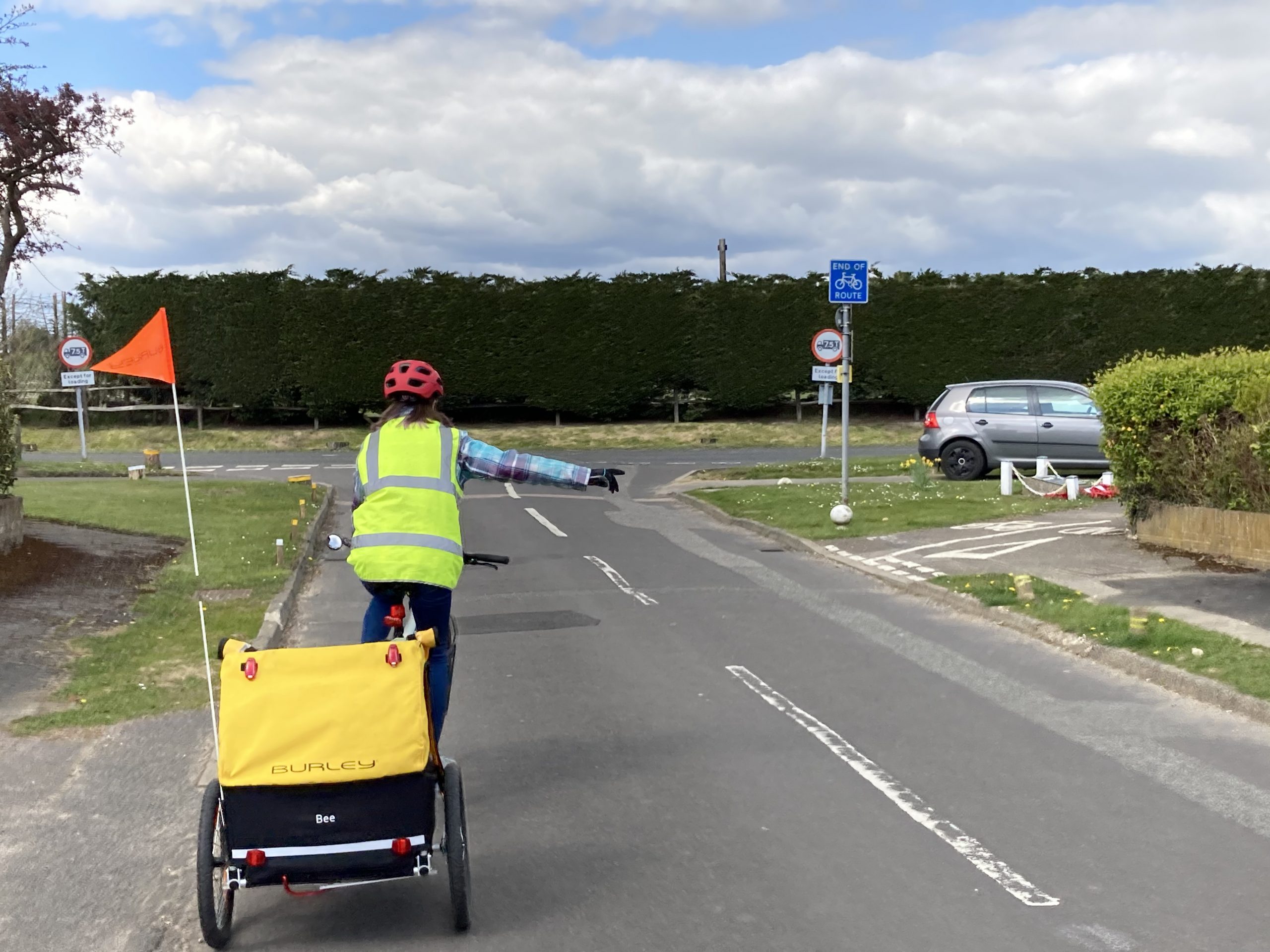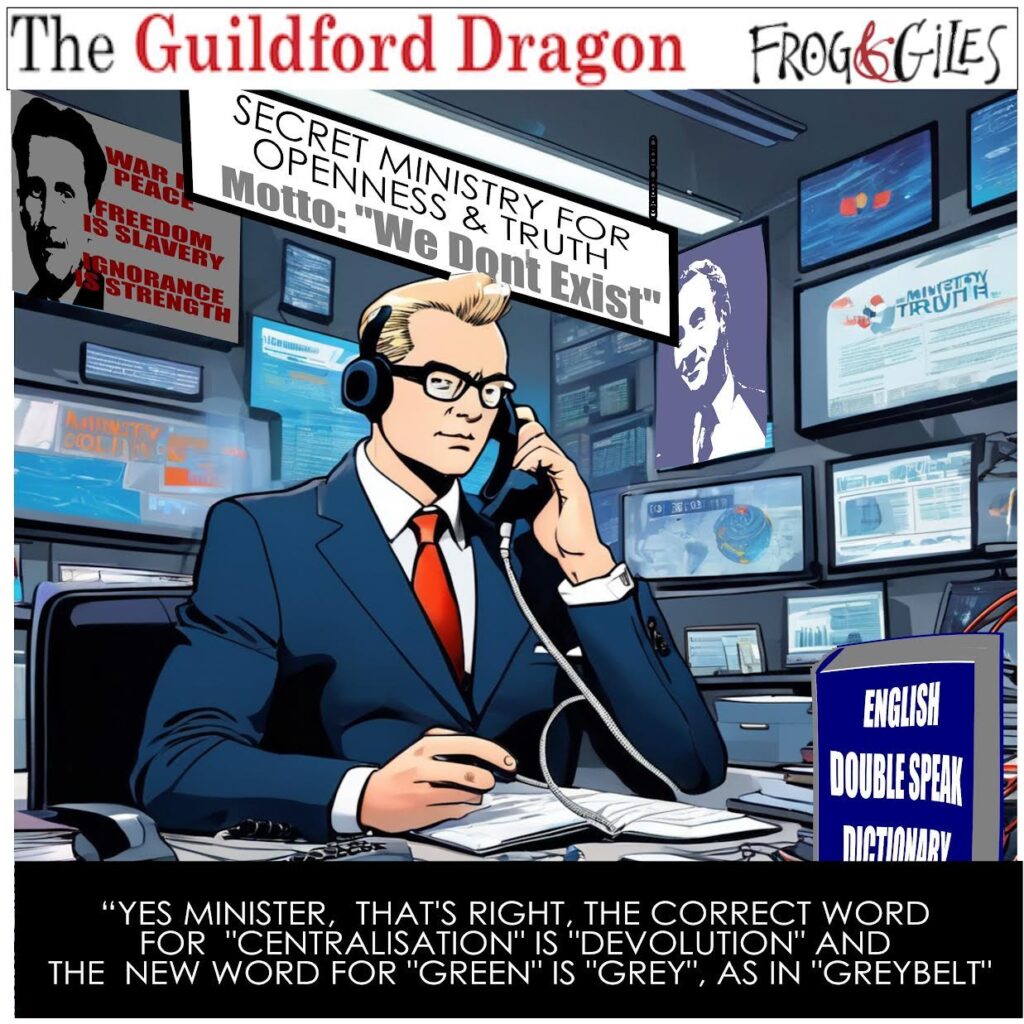 Abraham Lincoln
If given the truth, the people can be depended upon to meet any national crisis...
Abraham Lincoln
If given the truth, the people can be depended upon to meet any national crisis...
 Guildford news...
for Guildford people, brought to you by Guildford reporters - Guildford's own news service
Guildford news...
for Guildford people, brought to you by Guildford reporters - Guildford's own news service
Pushing Pedals: From Potholes To Positions And What’s Enough Room To Overtake?
Published on: 30 Jun, 2021
Updated on: 31 Jul, 2021
 Continuing our monthly column on local cycling by the Guildford Bicycle User Group (G-BUG). Its vision is to make cycling in Guildford safer, more convenient and fun. Members share a passion for making the borough more accessible through increased cycling.
Continuing our monthly column on local cycling by the Guildford Bicycle User Group (G-BUG). Its vision is to make cycling in Guildford safer, more convenient and fun. Members share a passion for making the borough more accessible through increased cycling.
By Bridie Sullivan
This month’s column from G-BUG explores some frequently asked questions, many aimed at how to share busy roads and paths in urgent need of an update.
Last year the UK government launched a long-term Cycling and Walking Plan, a Highway Code consultation and updated general guidance on cycling infrastructure across the country.

Photo James Toose on Unsplash
The government wants to convince more of us to avoid using cars for shorter journeys, cut pollution and reap the personal benefits by tackling the causes of poor health.
Unsurprisingly the Highway Code consultation has proved to be the most topical of these measures.
Cycling bodies such as Sustrans and Cycling UK have received thousands of responses to their campaigns to have the cycling section thoroughly revisited.

Photo Rai Camara on Unsplash.
Today’s cycling section of the Highway Code answers many of the questions, from parking, to passengers, rules for roundabouts, junctions and even what to wear.
Driving instructor Phil Gunney, with over a decade of experience teaching Surrey motorists, puts it into perspective.
He said: “Understanding how to safely deal with obstacles on the road is essential as we share the road with those trying to get safely to where they are going.
“Surrey roads are full of potholes and hazards. Drivers have to be aware these can have a serious affect on vulnerable roads users.”
Some of Phil’s most frequently asked questions centre around overtaking. How do I pass a cyclist safely? What is enough room?
The answer starts with a check for the signs that the cyclist is not about to change course. Looking over their shoulder is an indication they are about to change their position in the road.

Photo on Unsplash.
A cyclist’s road positions is categorised by the national Bikeability training course as primary when in the centre of the lane for visibility and secondary when they are an arm’s length from the kerb. This is not yet formally recognised by the Highway Code.
Cyclists on average ride one metre from the curb to avoid potholes and drains. Should a cyclist still encounter a surface issue, they may need up to three metres from the curb to avoid an accident.
In Phil’s view the other side of the central white line is the only safe distance to pass a cyclist on the road, even in a cycle lane.
But cyclists need to be visible. Contrasting colours make a difference to a driver’s detection.
Motorists, and HGV drivers wonder why cyclists position themselves in the middle of the lane at traffic lights and make eye contact before setting off. The answer is they want assurance they have been seen.
Let’s remind our MPs that cyclists should have the right to safe cycling. You can use the website writetothem.com to let them know your views on how things can be improved.
Safe Cycling
G-BUG. Follow us on Facebook, Twitter, LinkedIn or sign-up here.
Responses to Pushing Pedals: From Potholes To Positions And What’s Enough Room To Overtake?
Leave a Comment Cancel reply
Please see our comments policy. All comments are moderated and may take time to appear. Full names, or at least initial and surname, must be given.Recent Articles
- Letter: What Do Parish Councils Do?
- Void Discovered Below North Street – Road Closed
- Surrey and Sussex NHS Boards to Merge
- 2,000 Homes on Surrey Border Proposed for ‘Grey Belt’ Site
- Letter: New Chair for Guildford in Bloom
- City Manager is Aiming for Promotion
- Just Scrapping Ofwat Will Not Solve Guildford’s Pollution Problems, Says MP
- Mayor Supports Charity Day at Guildford Model Engineering Society
- Nurse Campaigns for 24hr Train Tickets
- Cathedral To Hold Special VJ Commemoration To Mark End of Second World War



Recent Comments
- Gary Tomlinson on Letter: Bus Lane Fines Are Not Used to Raise SCC Income
- Tony Harrison on Just Scrapping Ofwat Will Not Solve Guildford’s Pollution Problems, Says MP
- Elaine McGee on Birdwatcher’s Diary No.330 Bempton Cliffs
- Jeremy Holt on GBC Set to Approve a Public Consultation on Forming a Town Council
- David Roberts on Letter: No One Would Notice if Local Government Were Abolished Tomorrow
- Julie Simmons on GBC Set to Approve a Public Consultation on Forming a Town Council
Search in Site
Media Gallery
Dragon Interview: Local Artist Leaves Her Mark At One of England’s Most Historic Buildings
January 21, 2023 / No Comment / Read MoreDragon Interview: Lib Dem Planning Chair: ‘Current Policy Doesn’t Work for Local People’
January 19, 2023 / No Comment / Read MoreA3 Tunnel in Guildford ‘Necessary’ for New Homes, Says Guildford’s MP
January 10, 2023 / No Comment / Read More‘Madness’ for London Road Scheme to Go Ahead Against ‘Huge Opposition’, Says SCC Leader
January 6, 2023 / No Comment / Read MoreCouncillor’s Son Starts Campaign for More Consultation on North Street Plan
December 30, 2022 / No Comment / Read MoreCounty Council Climbs Down Over London Road Works – Further ‘Engagement’ Period Announced
December 14, 2022 / No Comment / Read MoreDragon Interview: GBC Reaction to the Government’s Expected Decision to Relax Housing Targets
December 7, 2022 / No Comment / Read MoreHow Can Our Town Centre Businesses Recover? Watch the Shop Front Debate
May 18, 2020 / No Comment / Read More













Vaughan Moseley
June 30, 2021 at 11:24 pm
With respect to the car driving instructor’s advice, the first thing a motorist should ask themselves is, “Do I need to risk trying to overtake the cyclist/s at this time?”